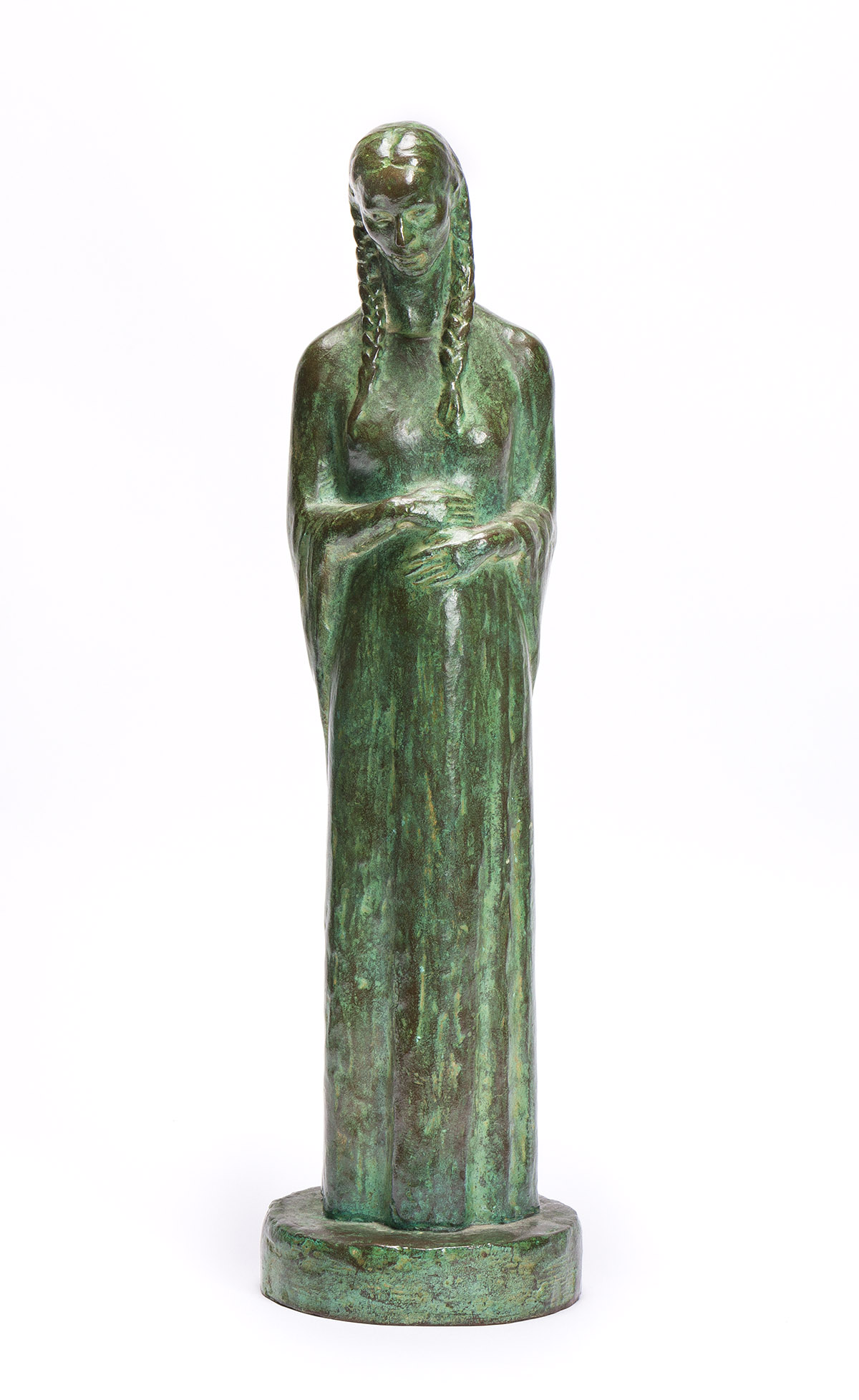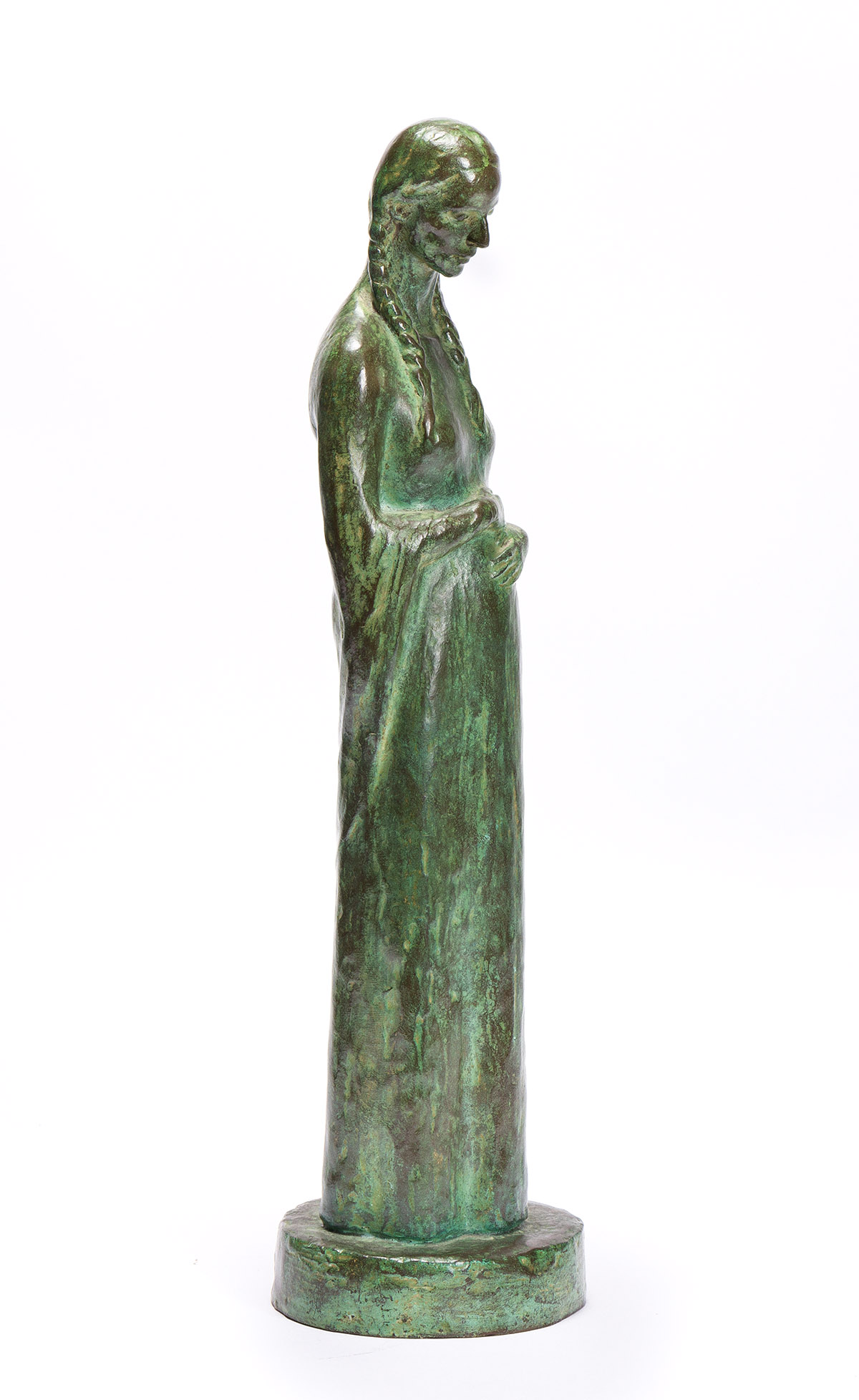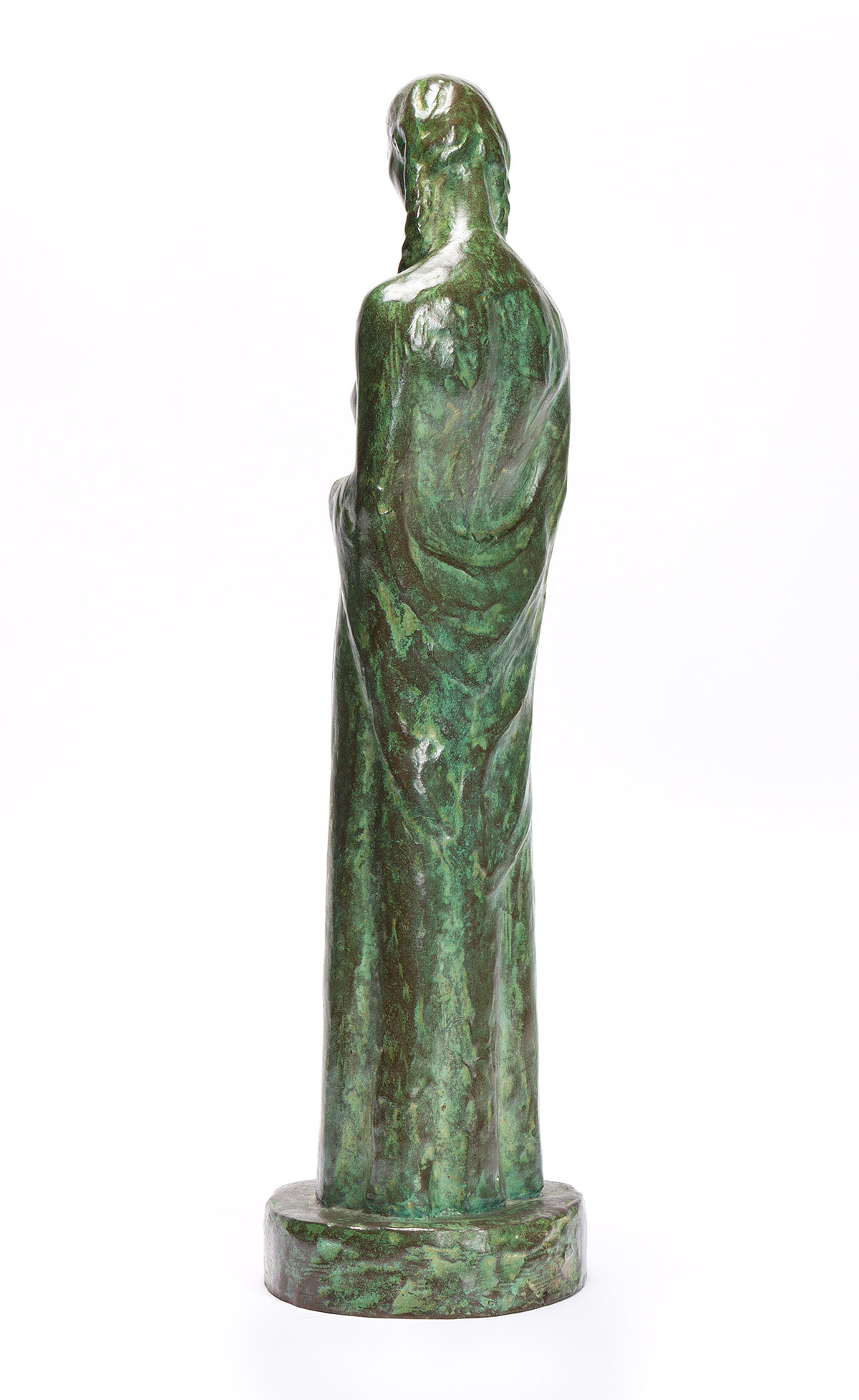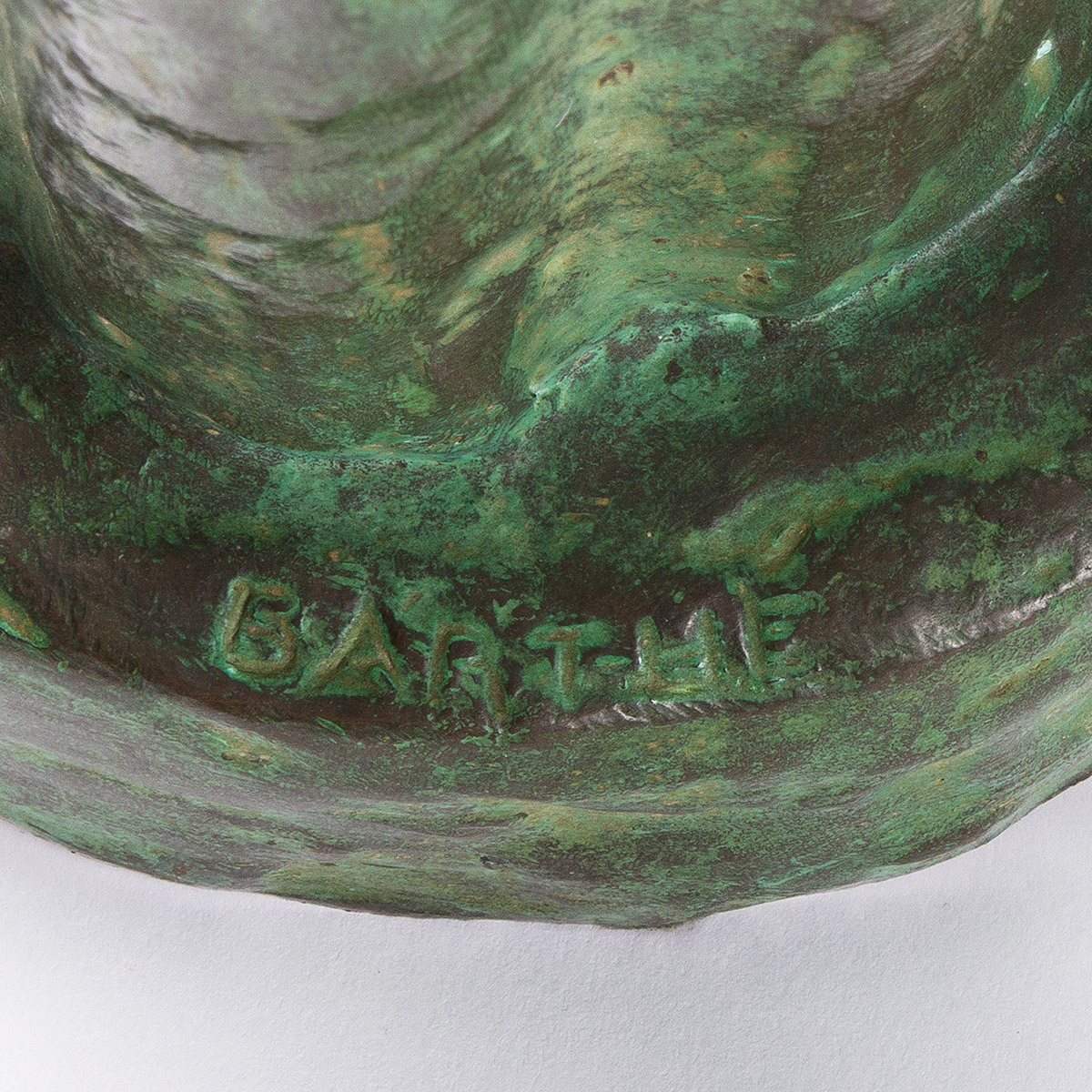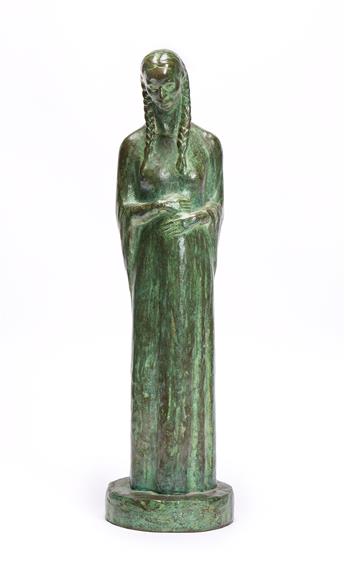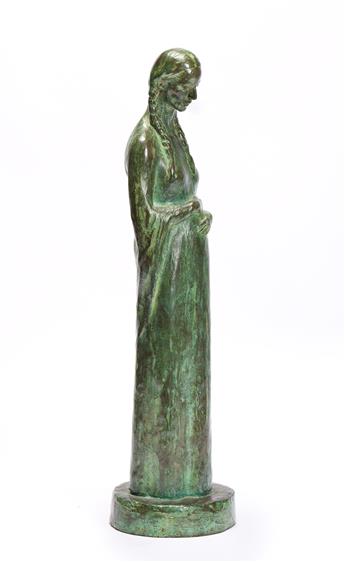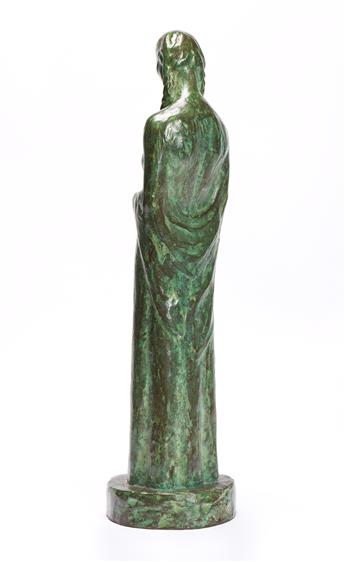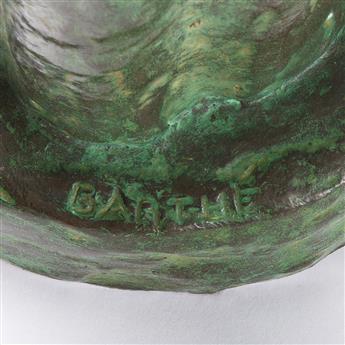Sale 2680 - Lot 20
Unsold
Estimate: $ 40,000 - $ 60,000
RICHMOND BARTHÉ (1901 - 1989)
Mary.
Cast bronze with a green patina, circa 1945. Approximately 533x140 mm; 21x5½ inches high. Signed "Barthé" on the base, lower edge.
Provenance: Ernest Bonner, Denver; Celeste Durant, Los Angeles (2003); private collection, Connecticut (2007), acquired from M. Hanks Gallery, Santa Monica, CA.
Richmond Barthé's Mary is a striking and modern interpretation of the biblical Mary as a pregnant young woman. This bronze cast is a smaller version of Barthé's 1945 sculpture of Mary, a 60 inch painted plaster figure which won the Audubon Society's gold medal prize that year. Having left Harlem for Midtown in the mid-1930s, Barthé achieved critical success and won several awards in the 1940s, including the Guggenheim Fellowship and election to the National Sculpture Society.
Barthé scholar Margaret Vendryes describes the place of this significant work in his oeuvre in some detail. Vendryes relates how as a Roman Catholic, Barthé took a particular interest in reinterpreting Catholic iconography in several 1940s sculptures, including his own Pietà, the bronze Mother and Son. Vendryes describes Mary as "the most charming and feminine of Barthé's female figures".
Another cast of this bronze is in the Harmon and Harriet Kelley Collection of African American Art. Lewis p. 44, Vendryes pp. 128-30, 207.
Mary.
Cast bronze with a green patina, circa 1945. Approximately 533x140 mm; 21x5½ inches high. Signed "Barthé" on the base, lower edge.
Provenance: Ernest Bonner, Denver; Celeste Durant, Los Angeles (2003); private collection, Connecticut (2007), acquired from M. Hanks Gallery, Santa Monica, CA.
Richmond Barthé's Mary is a striking and modern interpretation of the biblical Mary as a pregnant young woman. This bronze cast is a smaller version of Barthé's 1945 sculpture of Mary, a 60 inch painted plaster figure which won the Audubon Society's gold medal prize that year. Having left Harlem for Midtown in the mid-1930s, Barthé achieved critical success and won several awards in the 1940s, including the Guggenheim Fellowship and election to the National Sculpture Society.
Barthé scholar Margaret Vendryes describes the place of this significant work in his oeuvre in some detail. Vendryes relates how as a Roman Catholic, Barthé took a particular interest in reinterpreting Catholic iconography in several 1940s sculptures, including his own Pietà, the bronze Mother and Son. Vendryes describes Mary as "the most charming and feminine of Barthé's female figures".
Another cast of this bronze is in the Harmon and Harriet Kelley Collection of African American Art. Lewis p. 44, Vendryes pp. 128-30, 207.
Exhibition Hours
Exhibition Hours
Aliquam vulputate ornare congue. Vestibulum maximus, libero in placerat faucibus, risus nisl molestie massa, ut maximus metus lectus vel lorem.



